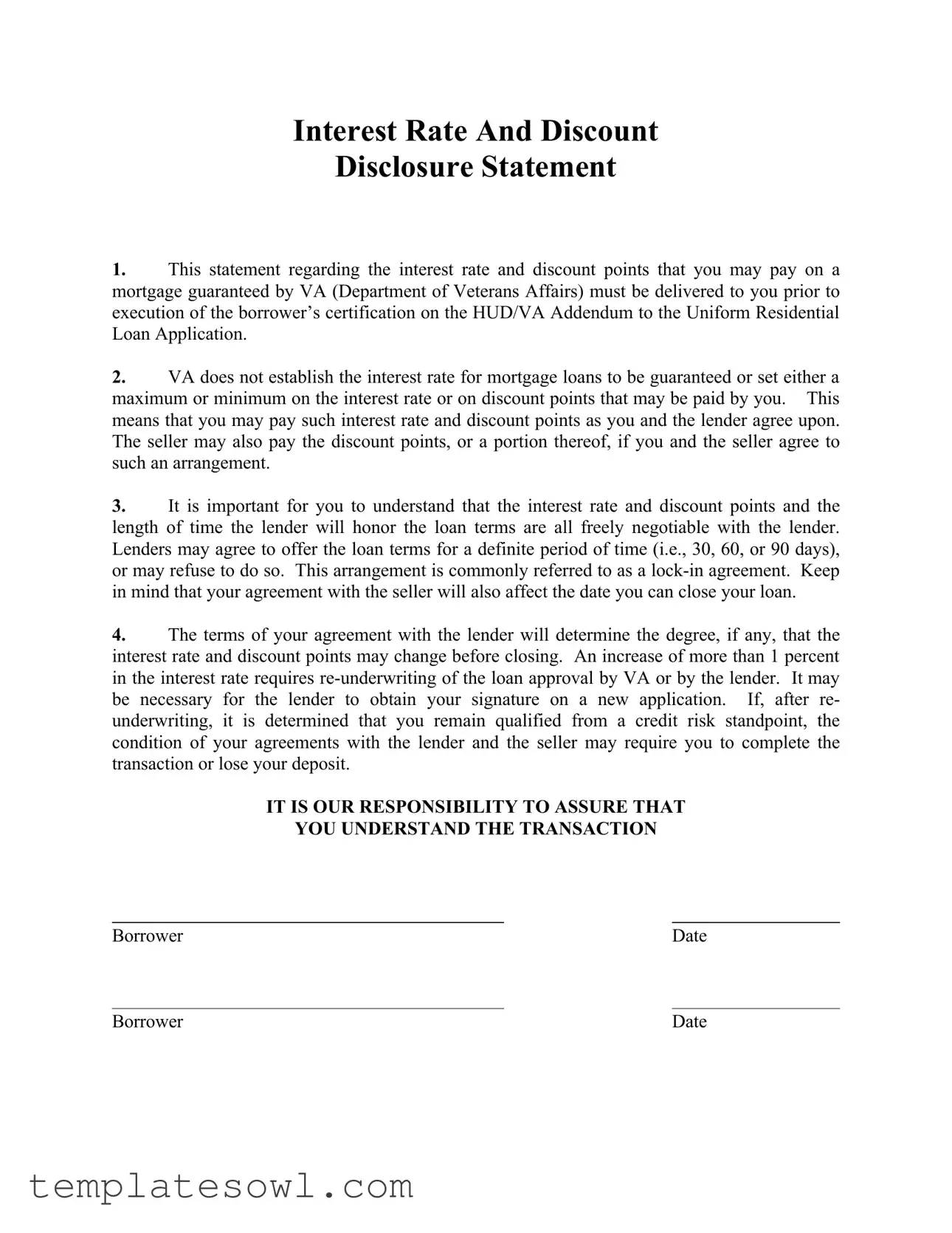What is the purpose of the Discount Disclosure Statement form?
The Discount Disclosure Statement serves as an important document that informs borrowers about the potential interest rate and discount points associated with their VA-guaranteed mortgage. It must be provided before you sign the borrower’s certification on the HUD/VA Addendum to the Uniform Residential Loan Application. This ensures that you have all necessary information regarding the financial terms of your mortgage, empowering you to make informed decisions.
Who sets the interest rates and discount points for VA loans?
There’s some flexibility when it comes to interest rates and discount points for VA loans. The VA does not set these rates or dictate a maximum or minimum amount. Instead, you and your lender will negotiate the terms that are agreeable to both parties. Additionally, if a seller agrees, they may cover some or all of the discount points, which can further affect your loan’s financial structure.
Can I negotiate the interest rate and discount points?
Absolutely! The terms including the interest rate and discount points are fully negotiable between you and the lender. This flexibility allows you to tailor the terms to suit your financial situation. Lenders might agree to keep the loan terms for a specified period, often called a lock-in agreement, but they are not required to do so. This negotiation can also impact your loan closing date based on your agreement with the seller.
What happens if my interest rate changes before closing?
If there is an increase of more than 1 percent in the agreed interest rate before closing, a re-underwriting process may be required by either the VA or the lender. This could mean that you will need to complete a new application, and your credit qualification will be reassessed. It’s important to understand that if you do not remain qualified based on this re-evaluation, you might face the risk of losing your deposit and may be required to complete the transaction per your agreements.
What does a lock-in agreement mean?
A lock-in agreement is a commitment from the lender to honor your loan terms for a certain period, such as 30, 60, or even 90 days. This means that the lender will not adjust your agreed-upon interest rate during this time frame, regardless of changes in the market. It's a helpful measure for borrowers, as it provides some certainty against potential rate increases while you finalize your loan process.
How can I ensure that I understand my transaction?
It is crucial to understand every aspect of your mortgage transaction. The Discount Disclosure Statement is part of your responsibility to ensure clarity. Don’t hesitate to ask questions and seek clarification on any areas that feel uncertain. Remember, the goal is to empower you to make the best financial decision. Always take the time to read through the documents carefully and consult with your lender if something isn’t clear.

